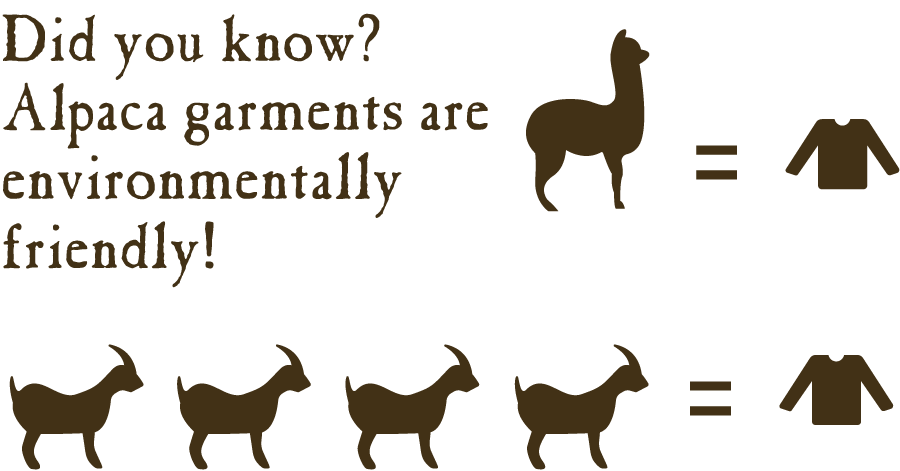Alpaca is the first fiber of choice at Simply Natural. We’ve fallen in love with this wonderful material because of its unique qualities — it is irresistibly soft and toasty warm. It is featherweight and long lasting. And most of all, it’s just plain beautiful.
All of our clothing is created in Peru – the ancestral home of the Alpaca.
Alpaca’s history is over 6,000 years in the making. The animal was bred from the wild camelids in the Andes Mountains regions in ancient times. Centuries before Rome, alpaca domestication produced a thriving economy in the Andes region.
Evidence indicates that this ancient civilization produced finer fleeces than what we have today. Later in the Inca Empire, status and wealth was measured in cloth, most of it alpaca cloth. It was safeguarded in secure storerooms and guarded like gold. Armies were paid in cloth. Their civilization defined itself by this silk like cloth. Royal herds were protected and developed. Records and historical accounts were recorded on elaborately embroidered tapestries.
So, for thousands of years, painstaking care was taken to develop fine fleece, which while soft, was also warm and extremely durable.
When Spanish conquerors stormed the Inca Empire, the centuries of care in alpaca breeding was virtually lost. The Spanish considered the alpaca a competitor for grazing lands for their sheep. The alpaca therefore became a source of meat and was slaughtered almost to the point of extinction.
The Inca who survived were driven high into the Andes, taking their most prized alpacas with them into hiding. The alpaca population survived due to their great importance to the native people, and their ability to endure the harsh mountain climate.
So, through the history of alpaca breeding, nothing was spared to create magnificence.


Raising alpacas is environmentally friendly. They live in the Peruvian highlands and their padded feet tread the ground gently. Unlike other animals, they don’t destroy the root systems, they drink less water than cashmere goats and create enough wool to make 4-5 sweaters every year.
It takes 4 goats to make one cashmere sweater.
Grades of Alpaca
There are several grades of alpaca. When an animal is sheared, the fingers of highly trained sorters separate the different grades of alpaca wool. Fineness is measured in Microns and finer fiber has a smaller micron count.
Fineness equals softness. Human hair has a micron count of 58 to 100, while most cashmere is in the 15-19 micron range. Alpaca fiber can range from 15-40 microns—depending on their breeding and age—with younger animals having the finest fiber.
The classifications are:
Alpaca Fiber Micron Count
Royal 20 or smaller
Baby 21-23
Superfine 24-26
Sweaters made from Royal or Baby alpaca can rival the finest cashmere and are less likely to pill and are longer lasting. We’ve seen alpaca sweaters, properly cared for and worn daily for 20 years, look good and are still going strong. So, alpaca, in addition to being beautiful, warm and cozy is also a smart investment! It’s better to buy a few long lasting sweaters than a bunch that you have to throw away sooner than you’d like.
We travel to Peru several times per year to personally source the yarn and hand select the best quality and colors. We design our garments with you in mind and oversee production in our artisan shops to bring you the best Peruvian alpaca capes, sweaters, coats and accessories.
Every flower is hand embroidered. Every care is taken to ensure you have the best alpaca garments in the world. Simply Natural is more than alpaca, as you will see — but alpaca is our starting point as one of the finest fibers on Earth. Let us show you what centuries of care and development can mean to fine knitwear.

